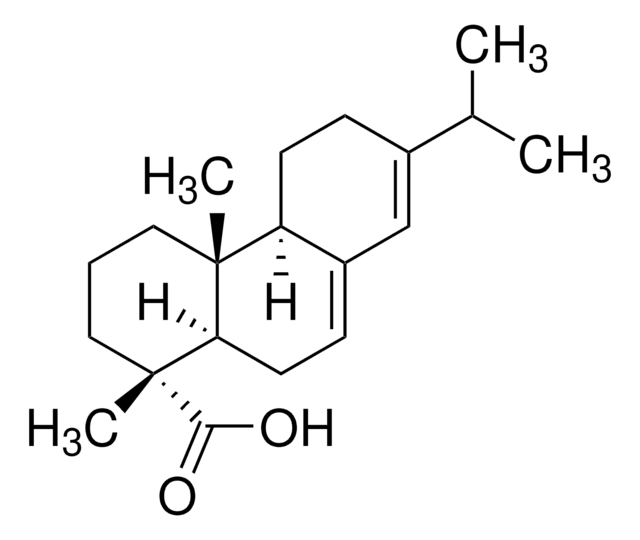19-2410
Methanol
≥99.8%, JIS special grade
Synonym(s):
Methyl alcohol
About This Item
Recommended Products
product name
Methanol, JIS special grade, ≥99.8%
grade
JIS special grade
vapor density
1.11 (vs air)
vapor pressure
410 mmHg ( 50 °C)
97.68 mmHg ( 20 °C)
Assay
≥99.8%
form
liquid
autoignition temp.
725 °F
expl. lim.
36 %
availability
available only in Japan
refractive index
n20/D 1.329 (lit.)
bp
64.7 °C (lit.)
mp
−98 °C (lit.)
density
0.791 g/mL at 25 °C (lit.)
format
neat
SMILES string
CO
InChI
1S/CH4O/c1-2/h2H,1H3
InChI key
OKKJLVBELUTLKV-UHFFFAOYSA-N
Looking for similar products? Visit Product Comparison Guide
Application
- Analyte protectant approach to protect amide-based synthetic cannabinoids from degradation and esterification during GC-MS analysis.: This study demonstrates the use of methanol as an effective solvent in gas chromatography-mass spectrometry (GC-MS) for analyzing volatile organic compounds, ensuring accurate and reliable results in chemical analysis (Alasiri AM et al., 2024).
- Low-Temperature Methane Activation Reaction Pathways over Mechanochemically-Generated Ce(4+)/Cu(+) Interfacial Sites.: This article explores the role of methanol in facilitating low-temperature methane activation, presenting new insights into catalytic processes that could revolutionize industrial applications (Trovarelli A et al., 2024).
- A novel magnetite C18/paracetamol/alginate adsorbent bead for simultaneous extraction of synthetic antioxidants and bisphenol A in water samples.: Discusses the synthesis of innovative adsorbent materials where methanol plays a crucial role in the extraction and purification processes, enhancing the detection of contaminants in environmental samples (Rujiralai T et al., 2024).
Signal Word
Danger
Hazard Statements
Precautionary Statements
Hazard Classifications
Acute Tox. 3 Dermal - Acute Tox. 3 Inhalation - Acute Tox. 3 Oral - Flam. Liq. 2 - STOT SE 1
Target Organs
Eyes,Central nervous system
Storage Class Code
3 - Flammable liquids
WGK
WGK 2
Flash Point(F)
53.6 °F
Flash Point(C)
12 °C
Certificates of Analysis (COA)
Search for Certificates of Analysis (COA) by entering the products Lot/Batch Number. Lot and Batch Numbers can be found on a product’s label following the words ‘Lot’ or ‘Batch’.
Already Own This Product?
Find documentation for the products that you have recently purchased in the Document Library.
Our team of scientists has experience in all areas of research including Life Science, Material Science, Chemical Synthesis, Chromatography, Analytical and many others.
Contact Technical Service










